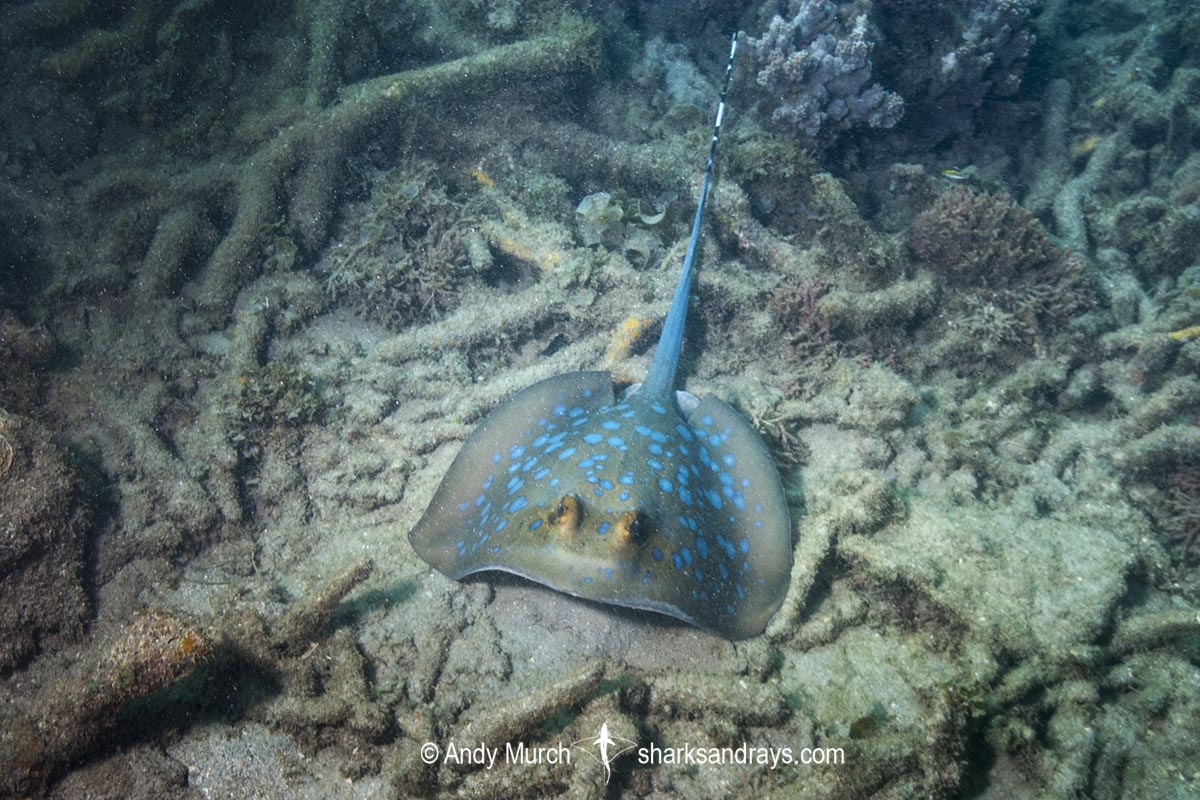Common name(s)
Bluespotted Maskray.
Binomial
Neotrygon caeruleopunctata.
Synonym(s)
Neotrygon kuhlii, Dasyatis kuhlii.
Identification
A small stingray with a kite-shaped disc that is slightly wider than long. Snout short, and bluntly angular. Tip of snout not extended. Anterior margins of disc straight or weakly convex. Pectoral fin apices angular and slightly falcate. Pelvic fins large; apices narrowly rounded.
Eyes large and protruding.
Mouth small, containing 2 large central oral papillae. Prominent labial furrows and folds around mouth. Nasal curtain narrow and skirt-shaped; posterior margin undulate and heavily fringed. Nostrils thin.
Tail broad and depressed at base, tapering gently to caudal sting, then thin but firm to tip. No prickly denticles on tail. Tail length (when intact) about 1.5 x disc width. Ventral finfold long and low. Dorsal finfold very short. 1-2 tail stings usually present.
Colour
Dorsum pale greenish-brown or brownish-grey with an brown band across eyes, and numerous eye-sized blue spots (often with pale centres), and a few scattered very small black specs. Blue spots fairly evenly distributed across disc except near margin. Ventrum white with a greyish submarginal band. Tail blue, abruntly changing to black with irregular white bands beyond caudal.
Size
Maximum disc width approximately 50cm.

Conservation Status
NOT EVALUATED
Although the IUCN has evaluated the bluespotted maskray as ‘Least Concern’, the assessment is based on a complex of recently (2016) split neotrygonid rays found throughout the Indian Ocean.
According to Borsa, the range of Neotrygon caeruleopunctata is far smaller. As such, it is listed here as ‘Not Evaluated’.

Habitat
Tropical/subtropical seas. On sandy substrates, often adjacent to reefs. From shallow bays to at least 20m (personal observation). Max depth unknown.
Distribution
Indian Ocean. Southern coasts of Java and Bali in Indonesia. Range based on DNA analysis by Borsa.
Reproduction
Matrotrophic aplacental viviparity. Litter size unknown.
Diet
Diet unknown.
Behavior
Sedentary. Behavior poorly known.
Reaction to divers
Shy and difficult to approach unless extremely accustomed to divers.
Diving logistics
Bluespotted maskrays are easily spotted in sandy areas of dive sites on the south coast of Bali e.g. at Nusa Penida.
